Sports
Legendary sportscaster Jim Gray remembers MLB great Pete Rose
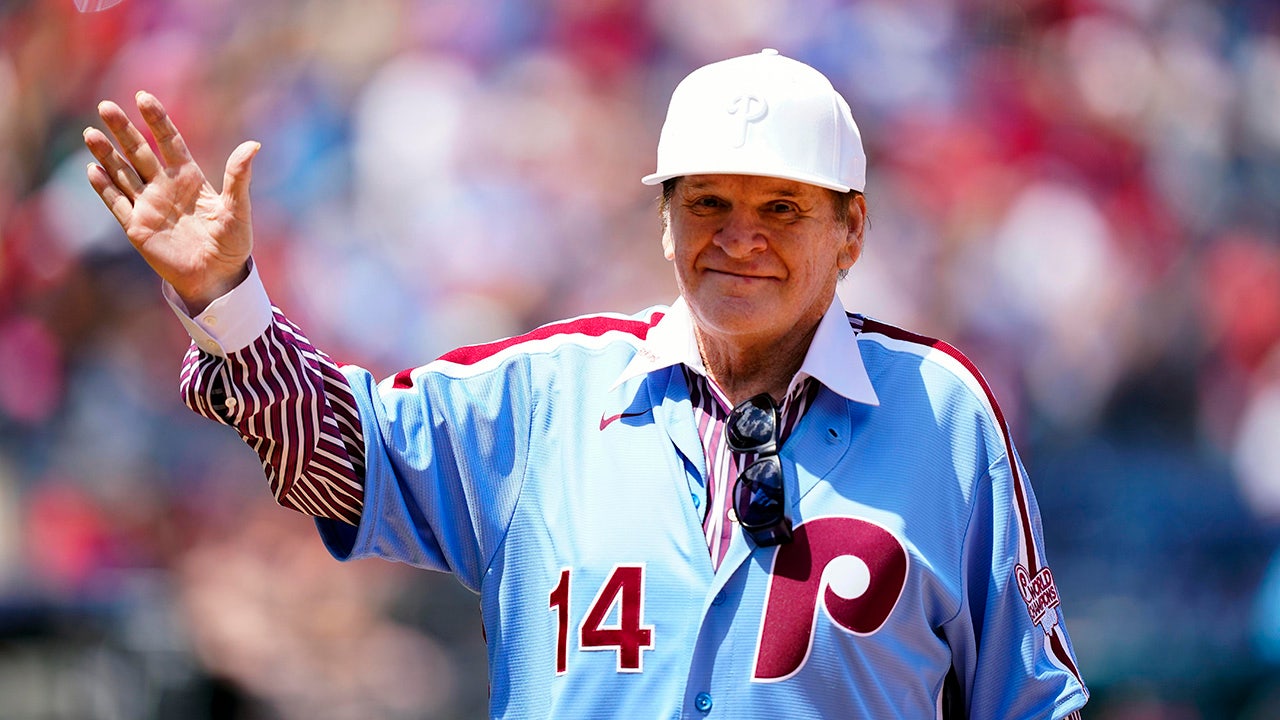
Pete Rose transfixed Major League Baseball audiences for 24 years across three different organizations as he set all-time records for hits, at-bats and games played.
The Clark County Coroner in Nevada confirmed to Fox News on Monday that Rose had died at the age of 83. The cause of death was not immediately known. As word about his death trickled out to the world, tributes and remembrances poured in.
“Charlie Hustle,” as he was called in his glory days with the Philadelphia Phillies, Cincinnati Reds and Montreal Expos, was remembered as a polarizing figure in the baseball world who seemingly gave it his all whether he played in the afternoon, evening or in exhibition games.
Philadelphia Phillies’ Pete Rose slides to third base during a baseball game against the New York Mets in Philadelphia on June 3, 1981. (AP Photo/Rusty Kennedy, File)
“Dogged, determined, relentless, competitor, vicious competitor with what he did to Ray Fosse during the All-Star Game in a game that maybe mattered back then,” legendary sportscaster Jim Gray told Fox News Digital when asked to describe the competitor Rose was for the baseball fan who is more in tune with the stars of today. “I think he played and cared about the results. He cared about his personal results. He cared about his team results and he was aggressive. The fans loved him. They loved that he showed up for work every day and gave it his all. And to my knowledge, what we saw of on the field was his pursuit to win.”
Gray recalled some of his first memories of Rose on the field when he was a broadcaster for Phillies pre-game shows. Rose played in Philadelphia from 1979 to the middle of the 1983 season, when he was traded to the Expos.
The greatness he brought on the field would eventually be overshadowed during his time as the Reds’ manager by a gambling scandal not seen in the sport since the 1919 Black Sox Scandal.
Rose was questioned in February 1989 about whether he had gambled on baseball and, at the time, only admitted to making bets on football, basketball and horse racing and vehemently denied betting on baseball. Some of the allegations were detailed in a Sports Illustrated story which sparked lawyer John M. Dowd to conduct an investigation and deliver it to then-Commissioner Bart Giamatti.
Dowd’s report was submitted to Giamatti in May 1989 and published in June 1989. The report alleged that Rose had bet on at least 52 Reds games in 1987.
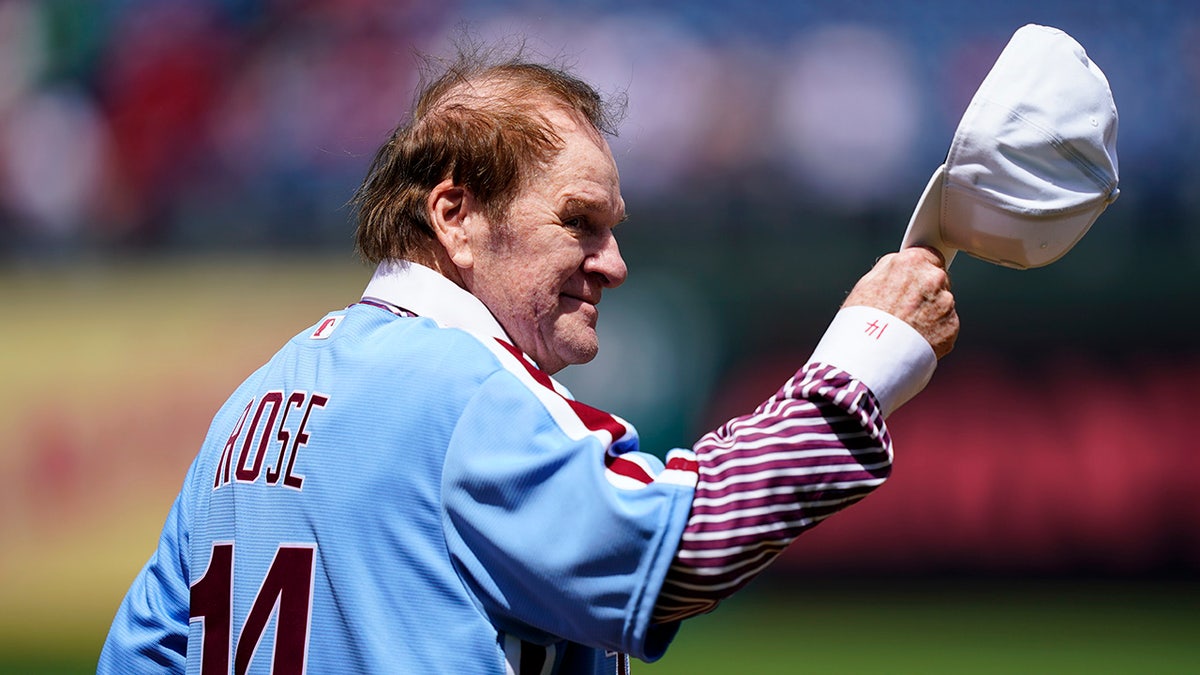
Pete Rose died on Sept. 30, 2024. (AP Photo/Matt Rourke, File)
Rose eventually agreed to voluntarily be placed on baseball’s ineligible list with the option that he could apply for reinstatement. Gray told Fox News Digital that Rose and Giamatti wanted to figure out how he could get back into the game, but Rose’s lawyer, Reuven Katz, did not want his client to admit to gambling on baseball and take the deal that was being offered – which included Rose seeking extensive help for addiction and rehabilitation.
According to Gray, Dowd told him that Katz said to Giamatti, “Peter’s a legend.” To which Giamatti replied, “No, baseball’s the legend.”
PETE ROSE’S DEATH SENDS BASEBALL WORLD INTO MOURNING: ‘ABSOLUTELY HEARTBROKEN’
Rose applied for reinstatement in 1992, 1998, 2003, 2015, 2020 and 2022. However, each commissioner, Fay Vincent, Bud Selig and Rob Manfred, either never acted on it or outright denied Rose’s requests. Being on the ineligible list kept Rose from being in the Baseball Hall of Fame.
Rose’s support seemed to be split among legends in the game. Ted Williams said in 2000 he did not believe Rose should be in the Hall Fame.
“I feel sorry for Pete Rose, but he committed the cardinal sin of baseball. He gambled,” he told The New York Times.
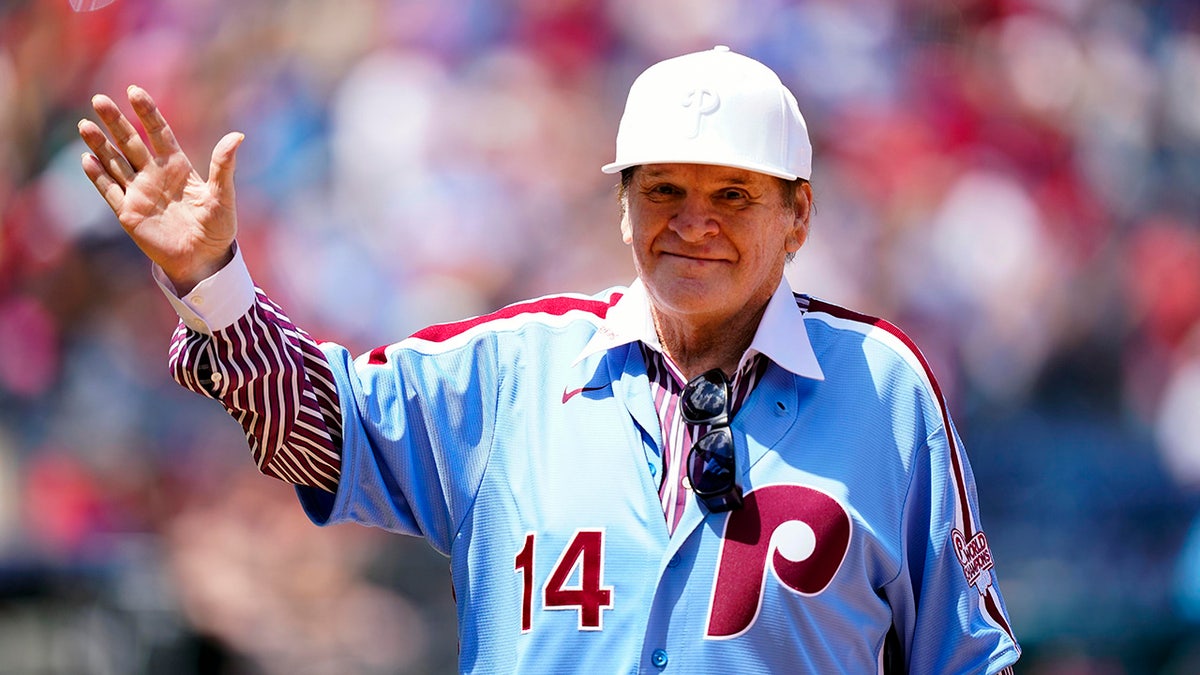
Former Philadelphia Phillies player Pete Rose waves to fans during an alumni day on Aug. 7, 2022 in Philadelphia. (AP Photo/Matt Rourke, File)
Mike Schmidt conceded in 2017 that Rose would not get into the Hall of Fame but wondered why the hitting machine never got the “same level of forgiveness” other guys have when it came to performance-enhancing drugs, according to the Philly Voice.
Years later, Rose admitted to betting on baseball in an autobiography despite repeated denials – including one in a famous 1999 interview with Gray at Turner Field when he was honored as part of the All-Century Team.
Additionally, as sports gambling became more prevalent across the United States, Manfred made clear that reinstating Rose would be “an unacceptable risk.”
Gray, who wrote about Rose in his book, “Talking to GOATs: The Moments You Remember and the Stories You Never Heard,” said he did not think it was strange that Rose was still ineligible even with baseball’s close ties to gambling.
“No, I don’t find that strange,” Gray told Fox News Digital. “The rules were the rules and the rules were applied to him based on the conditions at the time that this was going on. He signed his own banishment from baseball with the opportunity to reapply and none of those applications were successful.

Former Cincinnati Reds player Pete Rose waves to fans after being introduced during the Reds Hall of Fame Induction Ceremony on July 15, 2023, in Cincinnati. (AP Photo/Darron Cummings, File)
“So, he knew the conditions, and he agreed to those conditions. And just because the times have changed and things have changed doesn’t alter in any way the main fundamental issue. And that is any active manager, player, or anybody in an official capacity involved in baseball can ever gamble on the sport. No sport can ever accept that, and if caught doing so, then the punishment has to be severe.”
Gray added that he still thought Rose deserved to be in the hallowed halls of Cooperstown but with an explanation about his wrongdoings.
“Having said all that and understanding that the Hall of Famer is coupled with being banned from baseball and no gambling. We don’t live in the Soviet Union. And you can’t erase a man’s records. And what he did on the field is worthy of the Hall of Fame because he had more hits than anybody, and he was prolific at that. And the plaque and the honor never, obviously, came during his life. If they were to do it posthumously, perhaps it should reflect that he was banned from baseball and the reason and the reason why on the plaque – for gambling. But he should be in the Hall of Fame. You just can’t say it didn’t exist.”
Follow Fox News Digital’s sports coverage on X, and subscribe to the Fox News Sports Huddle newsletter.

Sports
DK Metcalf trade grades: Steelers add game-changing talent; Seahawks’ overhaul continues

The Seattle Seahawks have agreed to trade wide receiver DK Metcalf to the Pittsburgh Steelers for a second-round pick in the 2025 draft, according to league sources.
Why they made the move
The Seahawks entered the offseason intent on keeping Metcalf on an extension that would have kept both sides happy, but Metcalf requested a trade last week.
The Seahawks want a physical, run-heavy identity on offense, so they must have drawn a line in the sand at the $30 million market rate for premium receivers. Metcalf had a year remaining on his contract, so this was likely when his trade value would be at its highest. The Seahawks will receive the No. 52 pick from Pittsburgh.
The Steelers, meanwhile, have had their issues at receiver in recent years. Productive performers such as Diontae Johnson and Chase Claypool fizzled out before being shipped away, and veteran acquisitions such as Allen Robinson and Mike Williams never took off. They tried to acquire San Francisco 49ers star Brandon Aiyuk last offseason but couldn’t make it happen.
Metcalf has racked up at least 900 receiving yards in all six of his NFL seasons, including three topping 1,000 yards. He’s averaged eight touchdowns per year. Though not always a high-volume pass catcher — he topped out at 90 receptions in 2022 before grabbing 66 balls each of the past two seasons — Metcalf has the downfield, physical ability to mesh well with Pittsburgh’s offense, assuming the Steelers figure something out at quarterback.
Steelers trade grade: B+
The Steelers just proved they aren’t afraid to go after it, as this move certainly qualifies as that.
By locking Metcalf into a five-year, $150 million contract, the Steelers have made their biggest splash at wideout, where their track record of drafting and developing the position has hit a valley in recent years (except George Pickens). But the combination of Metcalf and Pickens will be a nightmare for opposing secondaries, so long as Pickens can jell with the more proven wideout.
More than just adding a dynamic receiving threat, the DK Metcalf trade should also give the Steelers plenty of leverage and flexibility when it comes to George Pickens, who is set to enter the final year of his rookie deal.
— Mike DeFabo (@MikeDeFabo) March 9, 2025
Both receivers play with their shoes on fire. They can be fearsome when the ball is in the air and devastating after the catch; and both stretch the field, which will help underneath options such as tight end Pat Freiermuth and receiver Calvin Austin.
The question, which figures to be answered very soon: What happens at quarterback?
The Steelers had mixed results with Russell Wilson and Justin Fields last offseason. Both are free agents along with a hit-or-miss group that includes Aaron Rodgers, Sam Darnold and Daniel Jones. The draft class is down this year, too. Sitting at No. 21 in the first round, the Steelers likely will have to wait to see what comes to them.
They got a marquee skill player. Now, they’ve got to find out who’s controlling the machine, though perhaps this move makes them a more attractive landing spot for available quarterbacks.
Seahawks trade grade: B
This quickly turned into a transitional type of offseason for the Seahawks, who agreed to trade quarterback Geno Smith to the Las Vegas Raiders and released wideout Tyler Lockett. They also hired offensive coordinator Klint Kubiak to replace Ryan Grubb.
The Seahawks will build around wideout Jaxon Smith-Njigba and running backs Ken Walker and Zach Charbonnet, but they’ll need to shore up an offensive line that’s been talented but injury-plagued for a couple of years. And, of course, they also need a quarterback, though there’s plenty of buzz around Darnold heading to the Pacific Northwest. If that doesn’t happen — or they enter the draft without a proven veteran starter on the roster — the Seahawks’ plan will come into much greater scrutiny.
GO DEEPER
Dugar: Whatever the Seahawks’ plan is after trading Geno Smith, it sure better work
General manager John Schneider and his staff have been on a heater in the draft as of late, so the extra capital is enticing. They’re picking at No. 18 in the first round and have Nos. 50 and 52 in the second along with a couple of third-rounders.
The Seahawks found themselves in a tough spot with Metcalf’s trade request. It’s understandable why they’re pivoting, but it’s now time to execute the vision.
(Photo: Jane Gershovich / Getty Images)
Sports
Eagles 'enthusiastically accepted' President Trump's White House invite after Super Bowl win, official says
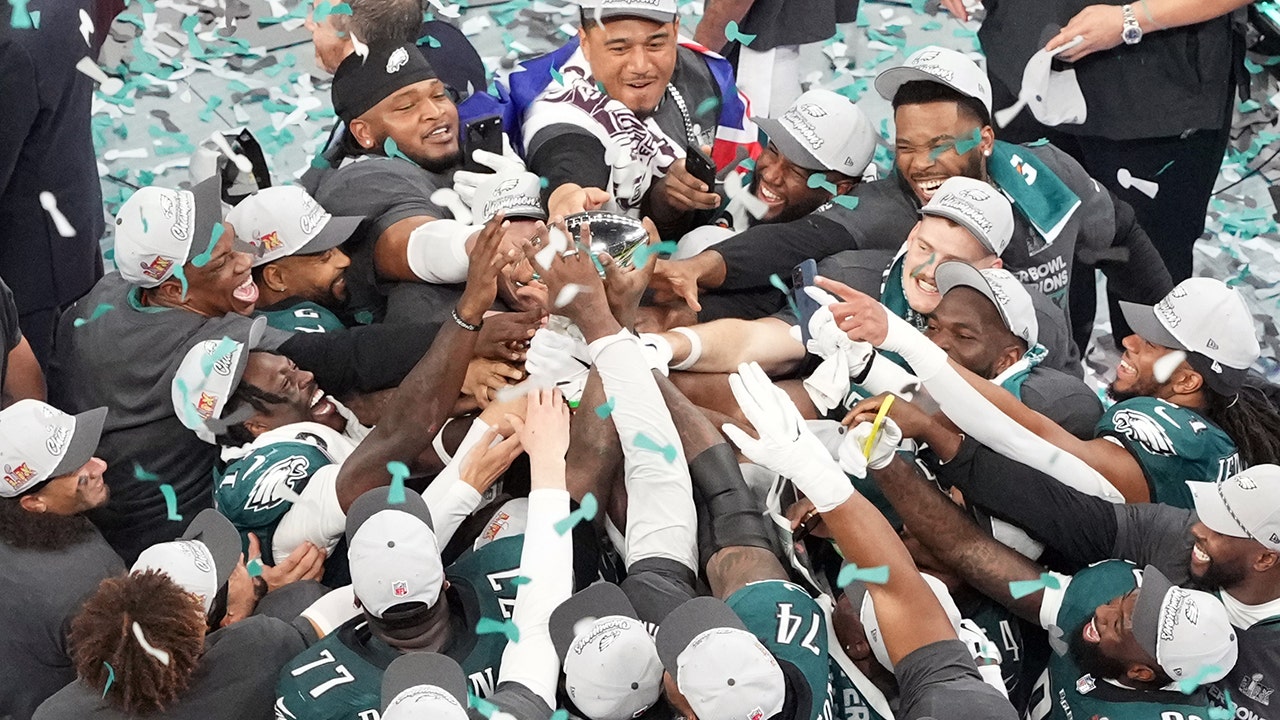
The Philadelphia Eagles will be heading to the White House at the invitation of President Donald Trump to celebrate their Super Bowl LIX victory over the Kansas City Chiefs last month.
“We sent the invite and they enthusiastically accepted. We are working with them to determine a date and logistics,” a White House official told Fox News Digital.
A team spokesperson also confirmed to Fox News Digital that “the Philadelphia Eagles organization has accepted an invitation to visit the White House and is currently working on scheduling a date and logistics.”
Philadelphia Eagles quarterback Jalen Hurts, left, and head coach Nick Sirianni celebrate with the Vince Lombardi Trophy after defeating the Kansas City Chiefs in Super Bowl LIX. (Mark J. Rebilas-Imagn Images)
There were questions about whether the Eagles would accept an invitation after not doing so in 2018, but Trump told The Spectator late last month that the team would be visiting this time around.
“They’re coming here. Philadelphia is coming here,” Trump told the outlet.
Trump also announced the invite to the team last month.
EAGLES TO RECEIVE WHITE HOUSE INVITE AFTER SUPER BOWL LIX WIN, TRUMP SAYS
“They will be [invited]. We haven’t yet, but we will be,” said Trump, who was in the Caesars Superdome to watch the Eagles beat the Chiefs, 40-22. “I thought it was a great performance by them. Absolutely, they’ll be extended an invitation. We’ll do it right away. We’ll do it some time today. They deserve to be down here, and we hope to see them.”
Eagles captain Lane Johnson said a White House visit would be a “team decision” after they won the Super Bowl.
“I’d be honored to go, regardless of who the president is, but we’ll see,” Johnson said via Sportico’s Eric Jackson. “It’s ultimately a team decision. I’ll do what’s best for the team.”
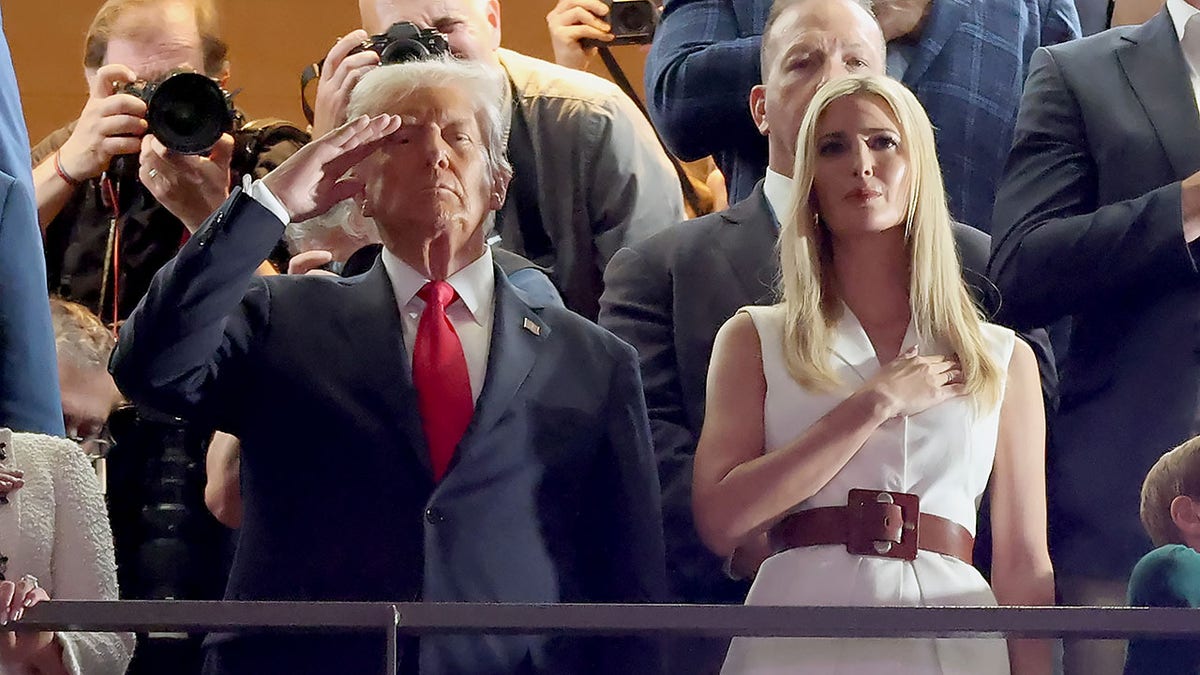
President Donald Trump and Ivanka Trump stand for the national anthem prior to Super Bowl LIX on February 9, 2025. (Kevin Mazur/Getty Images for Roc Nation)
Johnson, who has spent all 12 of his NFL seasons with the franchise, was on the team when it won the organization’s first-ever Vince Lombardi Trophy in 2018, defeating the New England Patriots.
However, controversy ensued that year when Trump rescinded his invitation to the Eagles as some players said they wouldn’t visit the White House due to the then-45th president’s criticism of those who kneeled or raised their fists during the national anthem to protest racial injustice and police brutality.
Trump released a statement at the time regarding his invitation cancellation, saying that “the 1,000 fans planning to attend the event deserve better.”
“They disagree with their President because he insists that they proudly stand for the National Anthem, hand on heart, in honor of the great men and women of our military and the people of our country,” Trump’s statement read seven years ago.
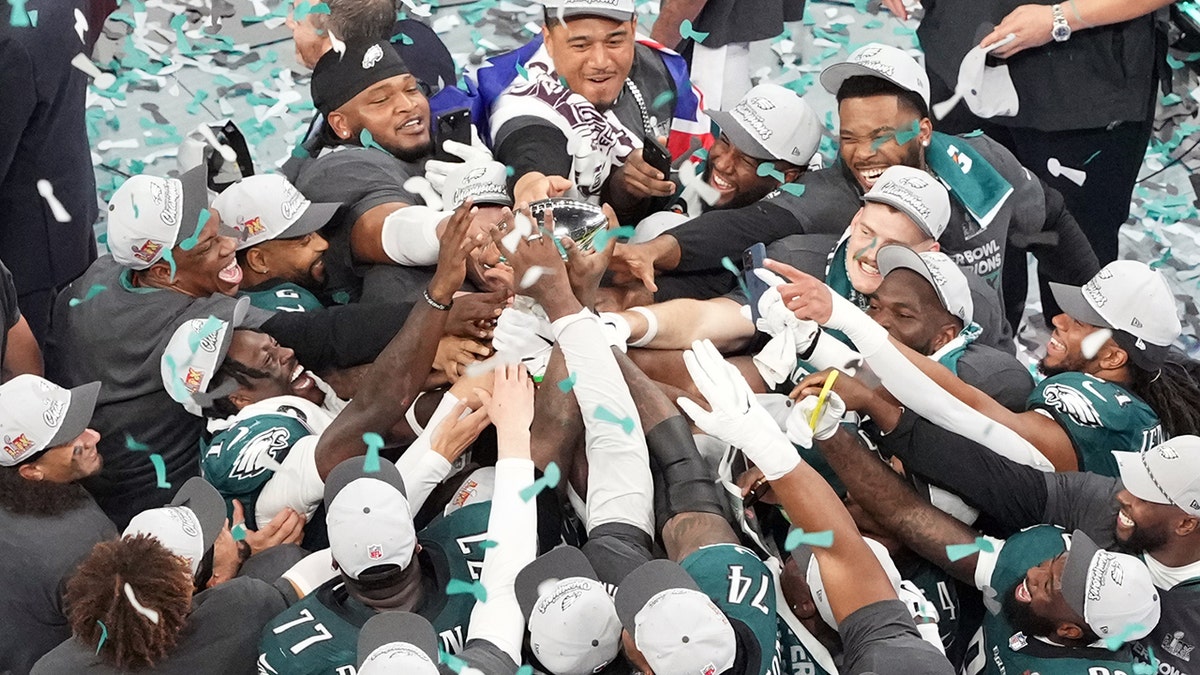
The Philadelphia Eagles lift the Vince Lombardi Trophy after defeating the Kansas City Chiefs in Super Bowl LIX. (James Lang-Imagn Images)
Seven years later, both parties are ready to celebrate a different win.
As both sides noted, time and logistics must be worked out as next steps to making the visit.
Fox News’ Greg Wehner and Jackson Thompson contributed to this report.
Follow Fox News Digital’s sports coverage on X, and subscribe to the Fox News Sports Huddle newsletter.
Sports
Luka Doncic's triple-double not enough to save LeBron-less Lakers in loss to Nets

NEW YORK — The frustration was evident early. And it was hard to tell what was bothering the Lakers more on Monday — was it the missed shots or the perceived missed calls?
If it wasn’t one thing, it was the other, the Lakers losing 111-108 to the lottery pick-bound Brooklyn Nets with tougher days over the next four weeks ahead.
Playing without four of their regular rotation players because of injury, the Lakers weren’t anywhere close to their best, physically shorthanded and mentally disengaged.
Austin Reaves, who needed to take on a more prominent offensive role with LeBron James out because of a groin strain, never got it going. Alex Len and Trey Jemison III, the bigs the Lakers have access to with Jaxson Hayes dealing with swelling in his knee from a bone bruise, combined for only two points and five rebounds.
And Luka Doncic, the engine the Lakers will need to push them through this brutal stretch of schedule, missed shots and looked toward the refs for whistles that never came. When he finally got his first one — midway through the third quarter, he threw up his hands in celebration. When a later foul was ruled on the floor, wiping out a made basket, he dismissively waved his hands at the refs in disbelief.
And needing a stop deep in the fourth, the Lakers forced a D’Angelo Russell miss, but the possession ended with Jarred Vanderbilt pushed to the floor and Zaire Williams scoring off the rebound.
Doncic needed 26 shots for his 22 points to go with 12 rebounds and 12 assists. Reaves missed 11 of 14 shots to go with his eight rebounds and 10 assists. Gabe Vincent and Dalton Knecht, filling in with the starters, scored 24 and 19 points respectively, and Jordan Goodwin had 17 off the bench, but the Lakers were never good enough executing on either end.
Brooklyn shot five more threes and 11 more free throws, the Lakers (40-23) attempting only two in the first half.
Monday’s game in Brooklyn was one of the few games the Lakers have this month against a team out of the playoff picture. They finish their current trip against Milwaukee and Denver on back-to-back nights before coming back to Los Angeles for five games in seven nights.
Before the game, JJ Redick said James’ injury was still being evaluated, and that the team doesn’t have a clear sense of the severity. Hayes’ knee injury is still considered day to day. Rui Hachimura, who is working toward a return from his knee injury, isn’t set for a re-evaluation until the Lakers return to L.A. And Dorian Finney-Smith wasn’t available because of continuing issues with his left ankle.
It meant the Lakers started Len at center alongside Knecht, Vincent, Reaves and Doncic — hardly a group with real on-court chemistry.
The Lakers turned the ball over 15 times, leading to 19 Brooklyn points. They stayed in the game because of Vincent and Goodwin, who made 11 of the Lakers’ 19 threes.
-

 Politics3 days ago
Politics3 days agoAgriculture secretary cancels $600K grant for study on menstrual cycles in transgender men
-

 Politics3 days ago
Politics3 days agoRepublicans demand Trump cut American legal association out of nominee process
-

 Politics6 days ago
Politics6 days agoEXCLUSIVE: Elon Musk PAC thanks Trump for 'saving the American Dream' in new million-dollar ad
-

 News3 days ago
News3 days agoGene Hackman Lost His Wife and Caregiver, and Spent 7 Days Alone
-

 Politics1 week ago
Politics1 week agoOPM's second email to federal employees asks what they did last week — and adds a new requirement: report
-

 News3 days ago
News3 days agoStates sue Trump administration over mass firings of federal employees
-

 News3 days ago
News3 days agoTrump Seeks to Bar Student Loan Relief to Workers Aiding Migrants and Trans Kids
-

 News1 week ago
News1 week agoICE is making more arrests, but critics say some claims don't add up















